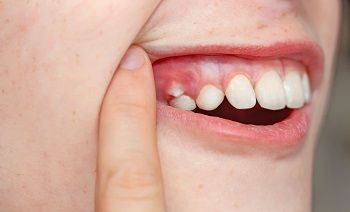When to Call Your Orthodontist: Signs of Orthodontic Emergencies.
Orthodontic treatment involves braces, wires, and appliances to straighten teeth and correct bite problems. While most orthodontic procedures are safe and effective, there may be times when emergencies arise, requiring immediate care from your orthodontist. Knowing the signs of orthodontic emergencies can help you promptly prevent further damage or discomfort, whether a broken wire or appliance or severe pain and swelling. By understanding what to do in the event of an orthodontic emergency, you can help ensure that your treatment progresses smoothly and safely. This blog post will discuss the common signs of orthodontic emergencies and when to call your orthodontist for immediate care.
Importance of Recognizing Orthodontic Emergencies
Recognizing orthodontic emergencies is crucial to ensure prompt care and avoid further damage or discomfort. Orthodontic emergencies can lead to pain, infection, and even tooth loss when left untreated. By knowing the signs of orthodontic emergencies, you can take immediate action to prevent these complications. Additionally, seeking timely care can help ensure your treatment progresses smoothly and safely. Ignoring orthodontic emergencies can lead to more complex and costly treatments in the future. Therefore, it is essential to be aware of the signs of orthodontic emergencies and seek care when necessary.
Signs of Orthodontic Emergencies
Orthodontic emergencies can present themselves in different ways. Here are the signs to look out for:
- Pain and discomfort: Soreness or tenderness in the mouth or gums, especially after an adjustment.

- Swelling or inflammation: Swelling or redness in the gums or cheeks that persists.
- Broken braces, wires, or appliances: Loose or broken brackets, wires, or other orthodontic devices.
- Trauma or injury to the mouth or face: Damage to the mouth or teeth caused by a fall, accident, or injury.
- Loose teeth or appliances: Braces or other appliances that have become loose or dislodged from the teeth.
- Difficulty eating or speaking: Inability to bite or chew food properly or trouble speaking due to orthodontic issues.
- Allergic reactions to braces materials: An allergic reaction to metal or other materials used in orthodontic treatment.
- Unusual bleeding or sores in the mouth: Bleeding or sores persist in the mouth or gums despite good oral hygiene practices.
If you experience any of these signs, you must seek care from your orthodontist as soon as possible to prevent further complications.
When to Seek Immediate Care?
While all orthodontic emergencies require prompt attention, certain situations warrant immediate care. Here are the signs that you should seek primary care from your orthodontist:
Severe pain or swelling: Intense pain or swelling in the mouth or gums that persists and is not relieved by over-the-counter pain medication.
Injuries to the mouth or face: Trauma or injuries to the mouth or face that result in bleeding, fractures, or dislocation of teeth or jaws.
Loose or dislodged teeth: Teeth that have become completely dislodged from the mouth or are loose to the point of falling out.
Difficulty breathing or swallowing: Severe breathing difficulties, choking, or difficulty swallowing due to orthodontic issues.
If you experience any of these signs, seek emergency care immediately. Remember that prompt care is essential to prevent further damage or complications. Sometimes, you may need to visit a hospital or urgent care center, especially if you have experienced severe trauma or injuries to the mouth or face.
What to Do Before Calling Your Orthodontist?
If you experience an orthodontic emergency, you can do a few things before calling your orthodontist. Here are some steps to take:
- Take photos or videos: Take pictures or videos of the affected area to help your orthodontist assess the situation.
- Rinse your mouth with warm salt water: Rinsing with warm salt water can help soothe irritated gums and reduce inflammation.
- Apply ice or heat to the affected area: Ice or heat can help alleviate pain and reduce swelling. Use ice for the first 24 hours after an injury and switch to heat.
These steps can help provide temporary relief. Moreover, they make it easier for your orthodontist to diagnose and treat your emergency when you call. However, it's important to note that these steps do not replace seeking care from your orthodontist. If you experience an orthodontic emergency, contact your orthodontist immediately for proper care and treatment.

How Your Orthodontist Will Handle the Emergency?
When you contact your orthodontist for an emergency, they will assess the situation and provide appropriate care. Here's how your orthodontist may handle an orthodontic emergency:
- Immediate treatment: Your orthodontist may provide immediate treatment to alleviate pain or discomfort. This may include adjusting wires or appliances, placing orthodontic wax to cover sharp brackets or wires, or prescribing pain medication or antibiotics.
- Follow-up care: Your orthodontist will schedule a follow-up appointment to monitor your progress and ensure your treatment progresses as planned. They may also adjust your treatment plan based on the emergency.
- Replacement of broken appliances or wires: If a bracket or wire is broken or dislodged, your orthodontist will replace or reattach it to ensure your treatment progresses as planned.
In addition to the immediate treatment, follow-up care, and replacement of broken appliances or wires, your orthodontist may also provide instructions for at-home care. This may include recommendations for pain relief, such as taking over-the-counter pain medication or applying a warm or cold compress to the affected area.
Your orthodontist may advise avoiding certain foods or activities that could worsen the emergency, such as hard or sticky foods or contact sports. They may also guide proper oral hygiene practices to ensure your teeth and gums remain healthy throughout treatment.
If the emergency is severe, your orthodontist may refer you to a specialist, such as a periodontist or oral surgeon. They will work closely with the specialist to ensure your treatment is coordinated and your progress is monitored closely.
It's important to remember that orthodontic emergencies can happen anytime. But prompt attention and care from your orthodontist can help minimize the impact on your treatment and oral health. Be sure to contact your orthodontist immediately if you experience an orthodontic emergency.
Conclusion
In conclusion, recognizing the signs of orthodontic emergencies and seeking immediate care can help prevent complications and ensure your treatment stays on track. If you experience an orthodontic emergency, provide temporary relief and contact your orthodontist immediately for proper care and treatment. Your orthodontist will provide personalized care based on your unique situation and treatment plan. Moreover, they may also provide instructions for at-home care to help manage discomfort or pain. Remember to follow your orthodontist's instructions carefully to ensure the best possible outcome.
Contact your Danville dentist, Dr. Hoss Abar, DDS, MSD, at Danville Orthodontics to know about Signs of Orthodontic Emergencies.
Resource:
Types Of Orthodontic Surgeries
*This media/content or any other on this website does not prescribe, recommend, or prevent any treatment or procedure. Therefore, we highly recommend that you get the advice of a qualified dentist or other medical practitioners regarding your specific dental condition*
